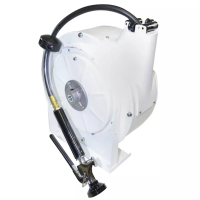Instruction Manual
D102005X012
846 Transducer
June 2017
2
Introduction
Scope of Manual
This instruction manual provides installation, operating, calibration, maintenance, and parts ordering information for
Fisher 846 current‐to‐pressure transducers. Refer to separate manuals for instructions covering equipment used with
the transducers.
Do not install, operate or maintain an 846 current‐to‐pressure transducer without being fully trained and qualified in
valve, actuator, and accessory installation, operation, and maintenance. To avoid personal injury or property damage,
it is important to carefully read, understand, and follow all of the contents of this manual, including all safety cautions
and warnings. If you have any questions about these instructions, contact your Emerson sales office
or Local Business
Partner before proceeding.
Description
The 846 current‐to‐pressure transducer, shown in figure 1, accepts an electrical input signal and produces a
proportional pneumatic output. Typically, 4 to 20 mA is converted to 0.2 to 1.0 bar (3 to 15 psi). Models are available
in direct or reverse action and field‐selectable for full or split range inputs. Refer to the Calibration section for more
information on input/output combinations.
The most common application of the transducer is to receive an electrical signal from a controller and produce a
pneumatic output for operating a control valve actuator or positioner. The 846 may also be used to produce a signal
for a pneumatic receiving instrument.
The 846 is an electronic I/P transducer. It has a single electronic circuit board, as shown in figure 2. The circuit contains
a solid‐state pressure sensor that monitors output pressure and is part of an electronic feedback network. The
self‐correcting ability provided by the sensor/circuit combination allows the transducer to produce a very stable and
responsive output signal.
All active mechanical and electrical components of the 846 are incorporated into a single, field‐replaceable module
called the module final assembly, shown in figure 2. The module final assembly contains the electronic circuit board,
pilot/actuator assembly, and booster stage. The module final assembly is easily removed by unscrewing the module
cover. Its design minimizes parts and reduces the time required for repair and troubleshooting.
The terminal compartment and module compartment are separated by a sealed compartment wall. This
multi‐compartment housing also protects the electronics from contaminants and moisture in the supply air.
Specifications
WARNING
This product is intended for a specific range of pressures, temperatures, and other application specifications. Applying
different pressure, temperature and other service conditions could result in a malfunction of the product, property damage
or personal injury.
Specifications for the 846 transducer are listed in table 1.

